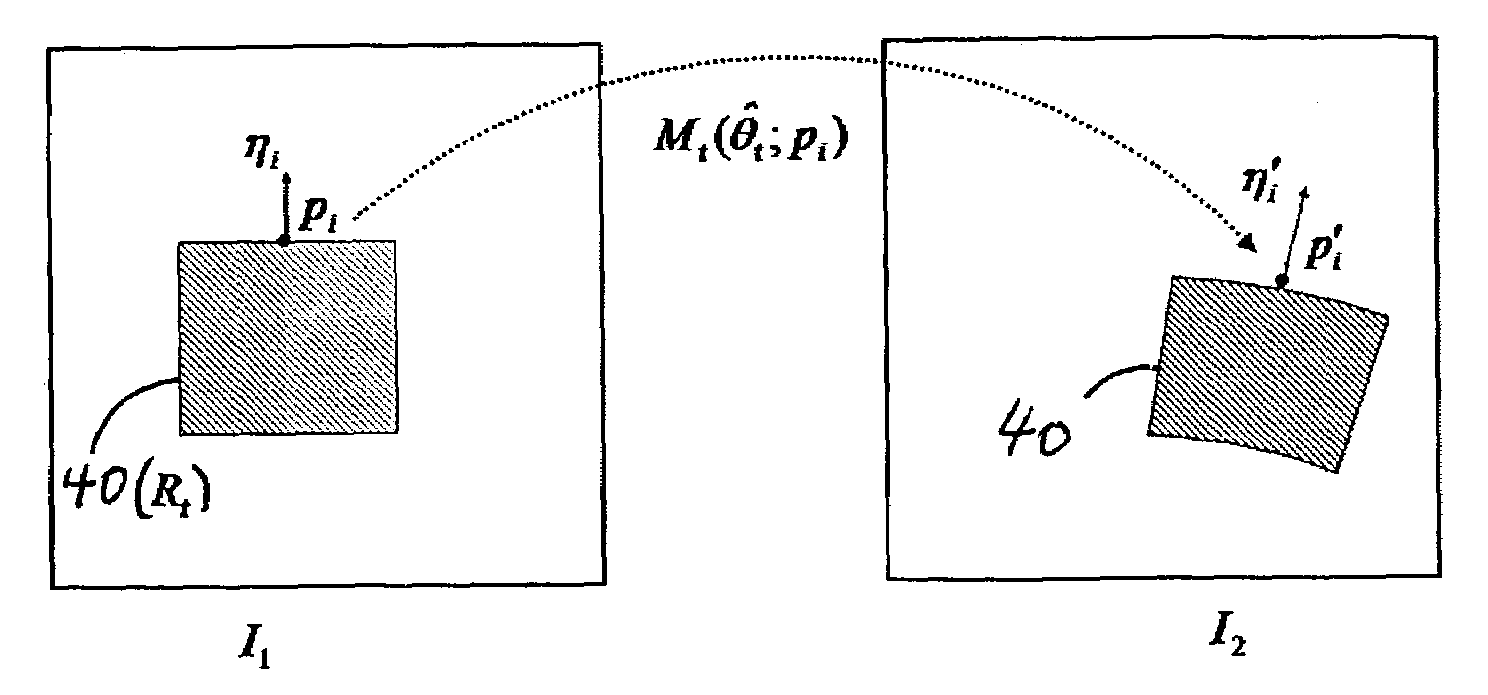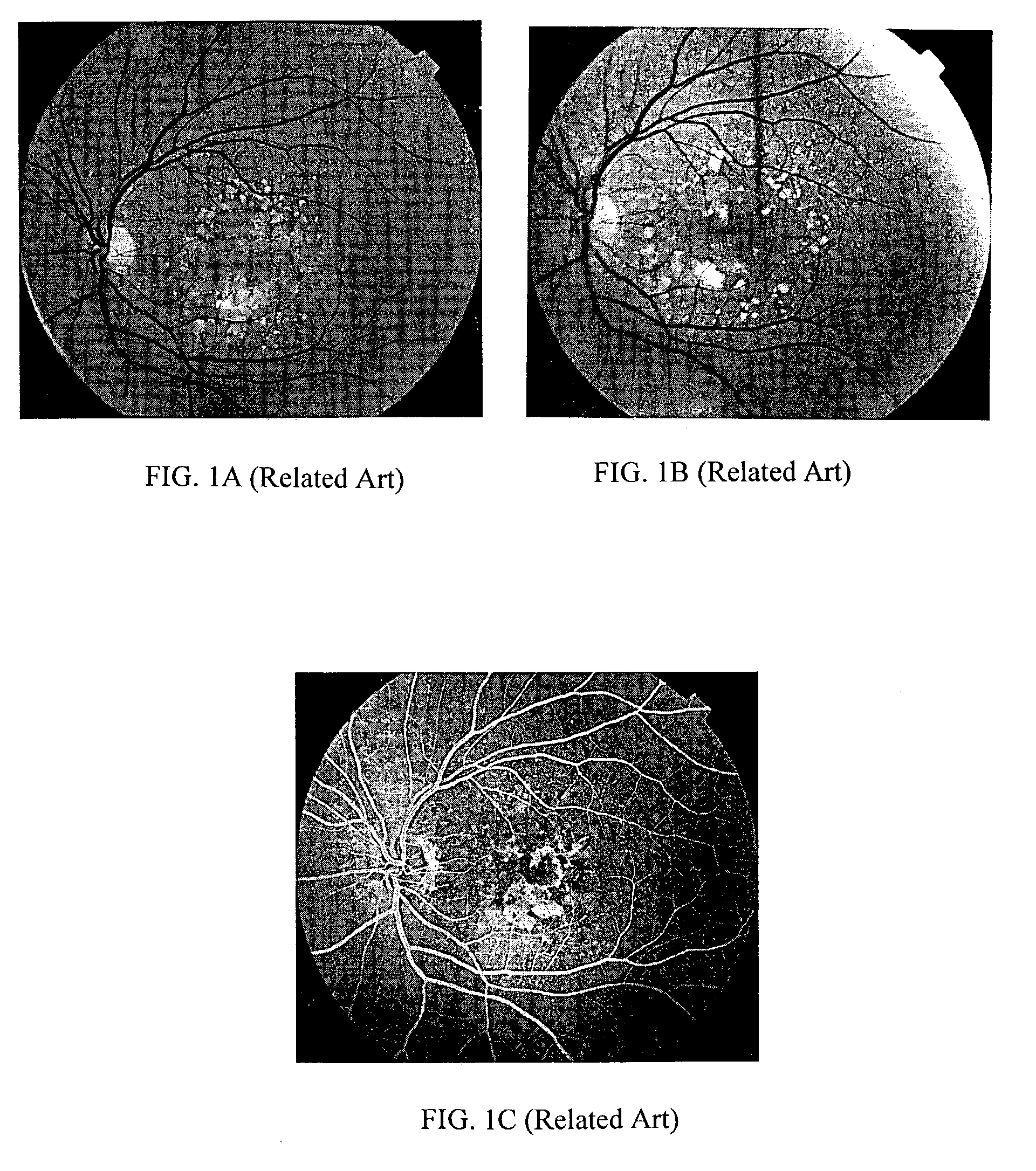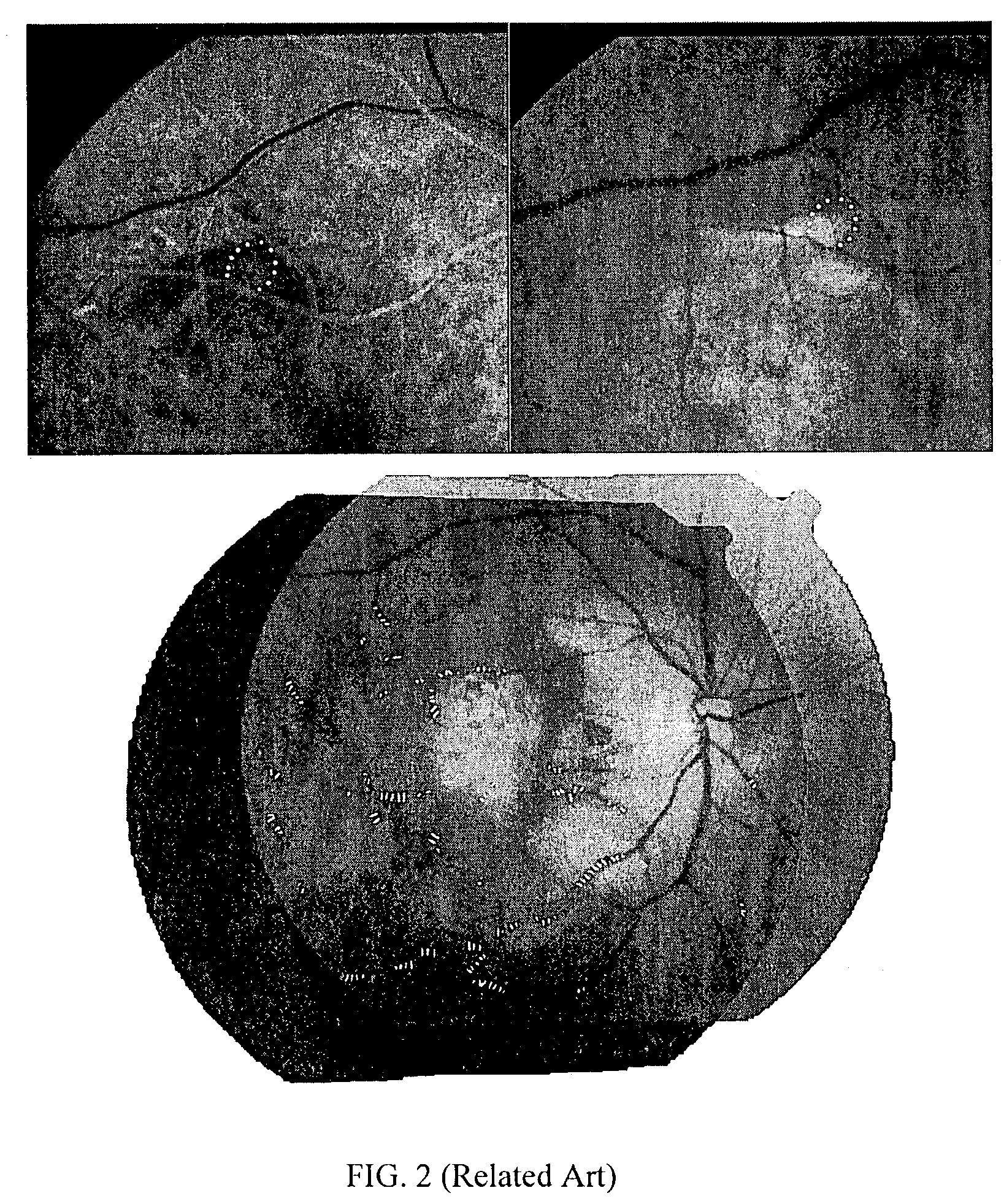Dual bootstrap iterative closest point method and algorithm for image registration
a technology of image registration and closest point, applied in image analysis, image enhancement, instruments, etc., can solve the problems of difficult longitudinal image registration, poor choice of longitudinal registration, and inability to solve problems such as ambiguity, so as to avoid ambiguity
- Summary
- Abstract
- Description
- Claims
- Application Information
AI Technical Summary
Benefits of technology
Problems solved by technology
Method used
Image
Examples
Embodiment Construction
1. Dual-Bootstrap Iterative Closest Point (ICP)
[0041]FIGS. 3A–3D and 4A depict fundus images of an unhealthy eye (nonexudative AMD) together with image features used in Dual-Bootstrap ICP registration and the iterative alignment of the images, in accordance with embodiments of the present invention. FIG. 3A and FIG. 3B show the images 10 and 15, with landmarks extracted by the retinal image-tracing algorithm used by the present invention. The landmarks are branching and cross over points of the retinal vasculature. The only landmark that is common to the images 10 and 15 is circled and denoted as landmarks 11 and 16, respectively, in the images 10 and 15. FIG. 3C and FIG. 3D show the centerline points obtained by the tracing algorithm. Many inconsistencies in the two sets of traces may be observed. Automatic detection of vascular landmarks (branching and cross-over points in the vessel) produces just one landmark in common between these two images. Aligning the images 10 and 15 base...
PUM
 Login to View More
Login to View More Abstract
Description
Claims
Application Information
 Login to View More
Login to View More - R&D
- Intellectual Property
- Life Sciences
- Materials
- Tech Scout
- Unparalleled Data Quality
- Higher Quality Content
- 60% Fewer Hallucinations
Browse by: Latest US Patents, China's latest patents, Technical Efficacy Thesaurus, Application Domain, Technology Topic, Popular Technical Reports.
© 2025 PatSnap. All rights reserved.Legal|Privacy policy|Modern Slavery Act Transparency Statement|Sitemap|About US| Contact US: help@patsnap.com



